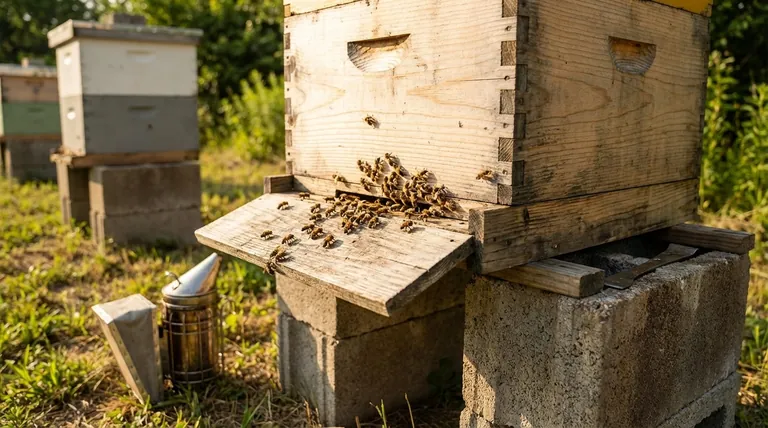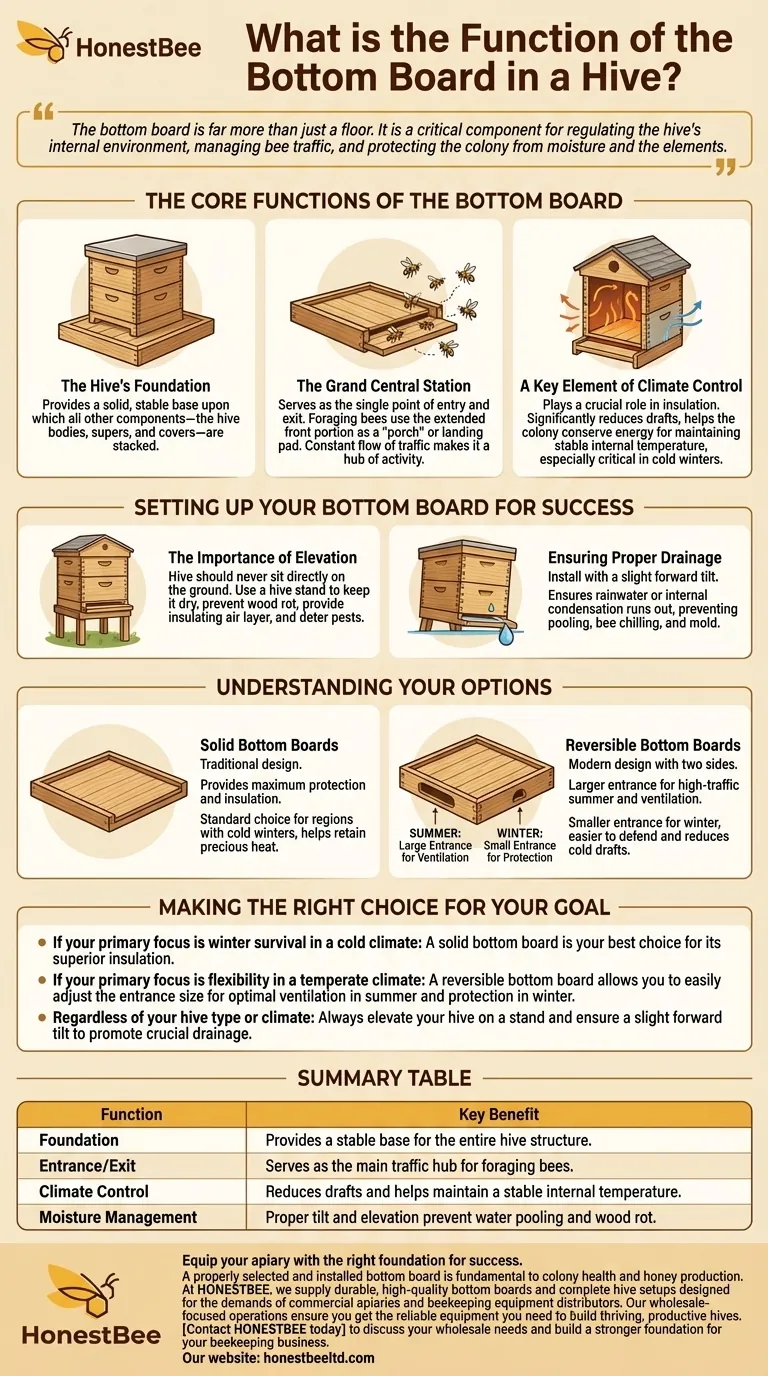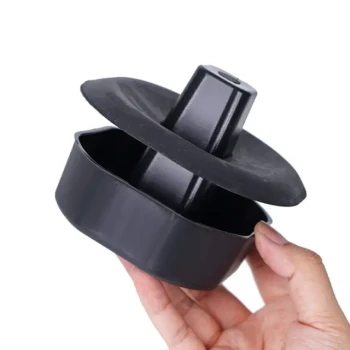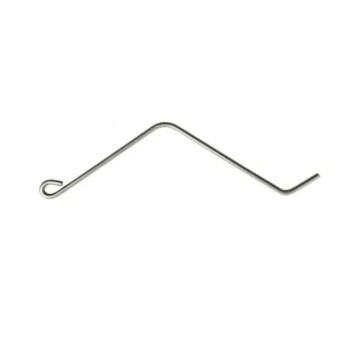In essence, the bottom board is the floor of the beehive, providing the structural foundation for the colony. It also contains the main entrance and exit, serving as the takeoff and landing platform for all of the hive's foraging bees.
The bottom board is far more than just a floor. It is a critical component for regulating the hive's internal environment, managing bee traffic, and protecting the colony from moisture and the elements.

The Core Functions of the Bottom Board
A bottom board is a simple component with several vital responsibilities that directly impact the health and productivity of a bee colony.
The Hive's Foundation
The bottom board is the very first piece you place when assembling a hive. It provides a solid, stable base upon which all other components—the hive bodies, supers, and covers—are stacked.
The Grand Central Station
This component serves as the single point of entry and exit. Foraging bees use the extended front portion as a "porch" or landing pad before entering the hive. This constant flow of traffic makes it a hub of activity.
A Key Element of Climate Control
A solid bottom board plays a crucial role in insulation. By creating a solid floor, it significantly reduces drafts and helps the colony conserve the energy needed to maintain a stable internal temperature, which is especially critical during cold winters.
Setting Up Your Bottom Board for Success
Proper setup of the bottom board is a simple step that prevents major problems down the line.
The Importance of Elevation
A hive should never sit directly on the ground. Using a hive stand elevates the bottom board, keeping it dry and preventing wood rot. This elevation also provides an insulating layer of air beneath the hive and makes it harder for pests to enter.
Ensuring Proper Drainage
The bottom board should always be installed with a slight forward tilt. This simple orientation ensures that any rainwater that blows into the entrance or condensation that forms inside runs out of the hive instead of pooling on the floor, which could chill the bees and promote mold.
Understanding Your Options
While the concept is simple, bottom boards come in a few variations designed for different needs and climates.
Solid Bottom Boards
This is the traditional design. A solid bottom board provides maximum protection from the elements and offers the best insulation. It is the standard choice for beekeepers in regions with cold winters, as it helps the colony retain precious heat.
Reversible Bottom Boards
Many modern bottom boards are reversible. One side provides a larger entrance (typically 3/4 inch), which is ideal for high-traffic summer months and ventilation. The other side offers a smaller, reduced entrance (typically 3/8 inch), which is better for winter as it's easier for a smaller colony to defend and reduces cold drafts.
Making the Right Choice for Your Goal
Your local climate is the primary factor in choosing and managing your bottom board.
- If your primary focus is winter survival in a cold climate: A solid bottom board is your best choice for its superior insulation.
- If your primary focus is flexibility in a temperate climate: A reversible bottom board allows you to easily adjust the entrance size for optimal ventilation in summer and protection in winter.
- Regardless of your hive type or climate: Always elevate your hive on a stand and ensure a slight forward tilt to promote crucial drainage.
Properly selecting and positioning your bottom board is a foundational step in successful beekeeping.
Summary Table:
| Function | Key Benefit |
|---|---|
| Foundation | Provides a stable base for the entire hive structure. |
| Entrance/Exit | Serves as the main traffic hub for foraging bees. |
| Climate Control | Reduces drafts and helps maintain a stable internal temperature. |
| Moisture Management | Proper tilt and elevation prevent water pooling and wood rot. |
Equip your apiary with the right foundation for success. A properly selected and installed bottom board is fundamental to colony health and honey production. At HONESTBEE, we supply durable, high-quality bottom boards and complete hive setups designed for the demands of commercial apiaries and beekeeping equipment distributors. Our wholesale-focused operations ensure you get the reliable equipment you need to build thriving, productive hives.
Contact HONESTBEE today to discuss your wholesale needs and build a stronger foundation for your beekeeping business.
Visual Guide

Related Products
- Langstroth Solid Bottom Board for Beekeeping
- Langstroth Screen Bottom Board for Beekeeping Wholesale
- Australian Pine Wood Langstroth Screen Bottom Board for Wholesale
- Professional Ant-Proof Beehive Stand with Integrated Moat for Beekeeping
- Professional Insulated Winter Hive Wrap for Beekeeping
People Also Ask
- What are the characteristics of a solid bottom board? A Guide to Hive Foundation & Climate Control
- How do honeybees adapt to different bottom board types in terms of temperature regulation? Optimize Your Hive Climate
- What is the suggested approach for choosing hive boards if you have only 1 or 2 hives? Test Both Types to Find Your Perfect Fit.
- What frame setups are available for the solid bottom boards? Choose the Right Foundation for Your Hive
- How is the solid bottom board constructed to ensure durability? Built for Longevity with Quality Wood & Beeswax



















